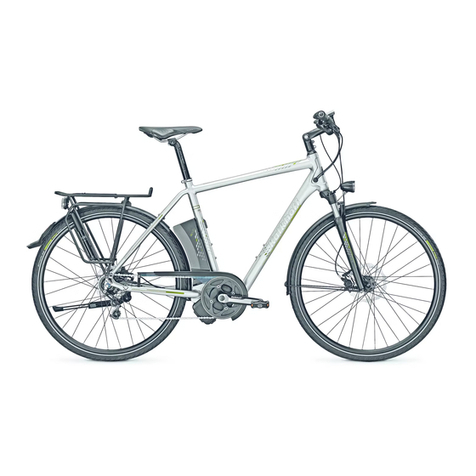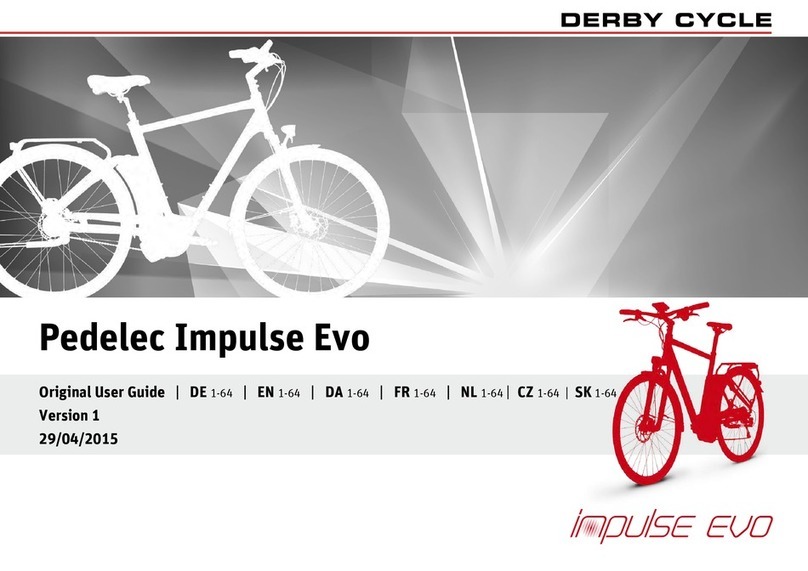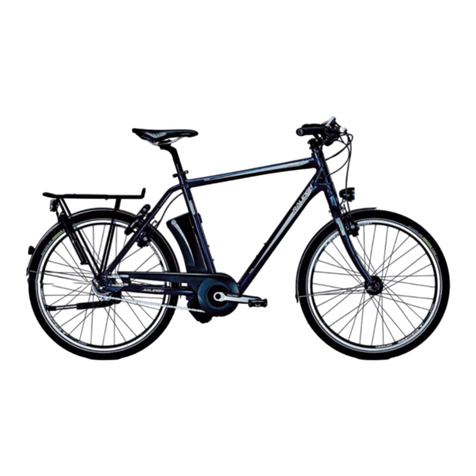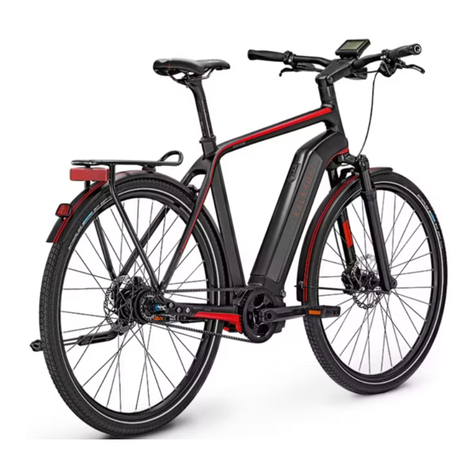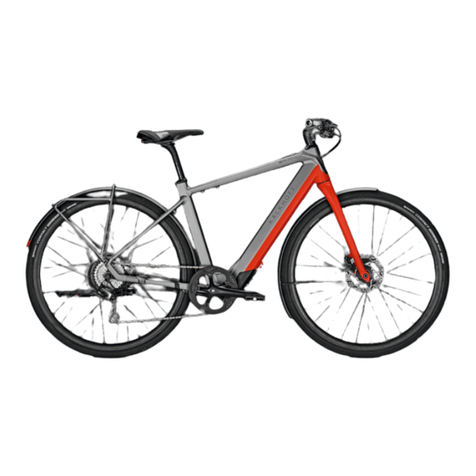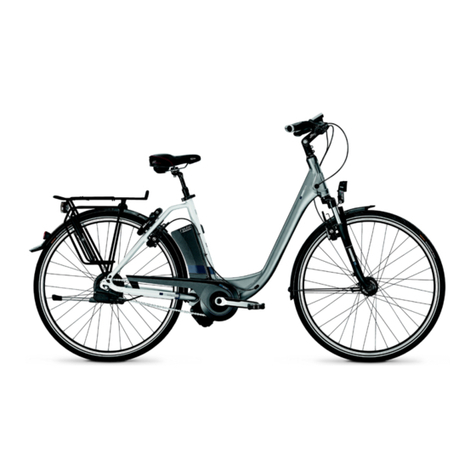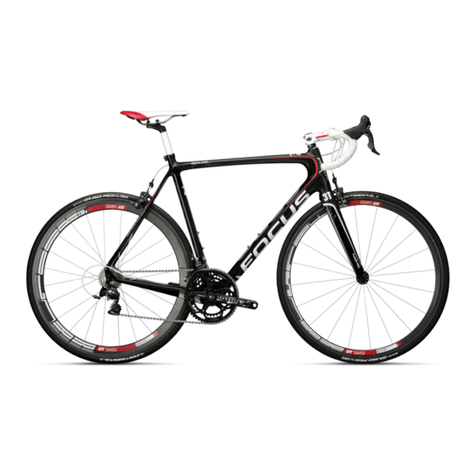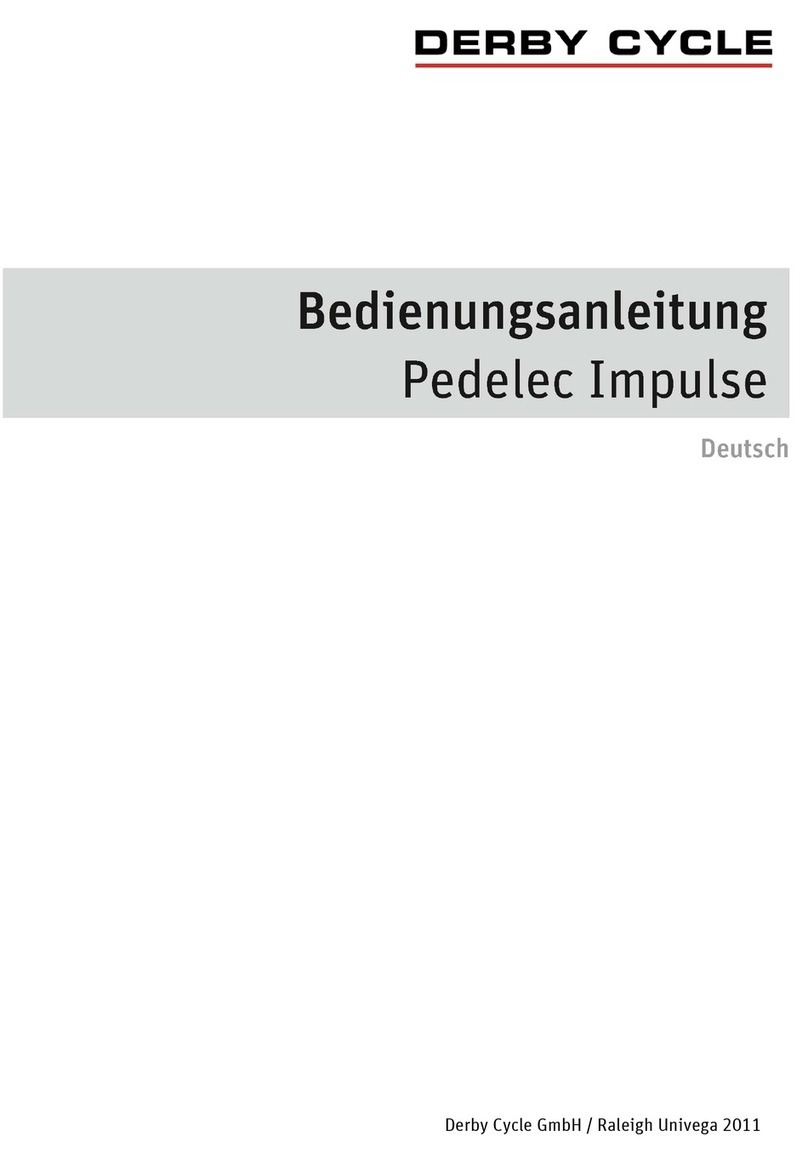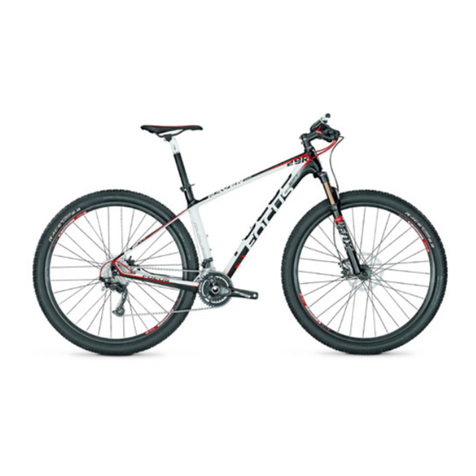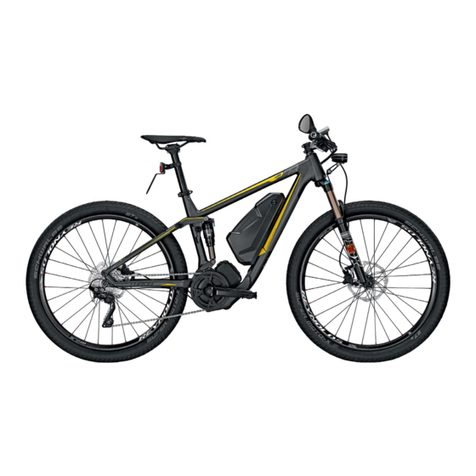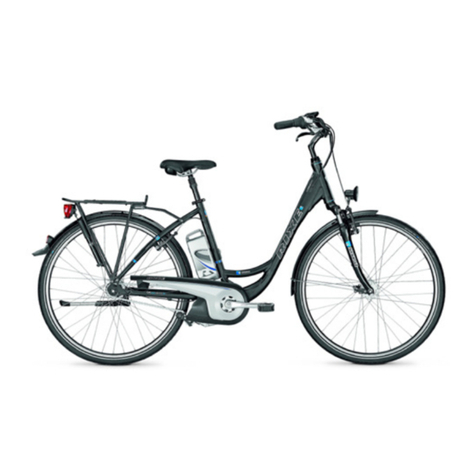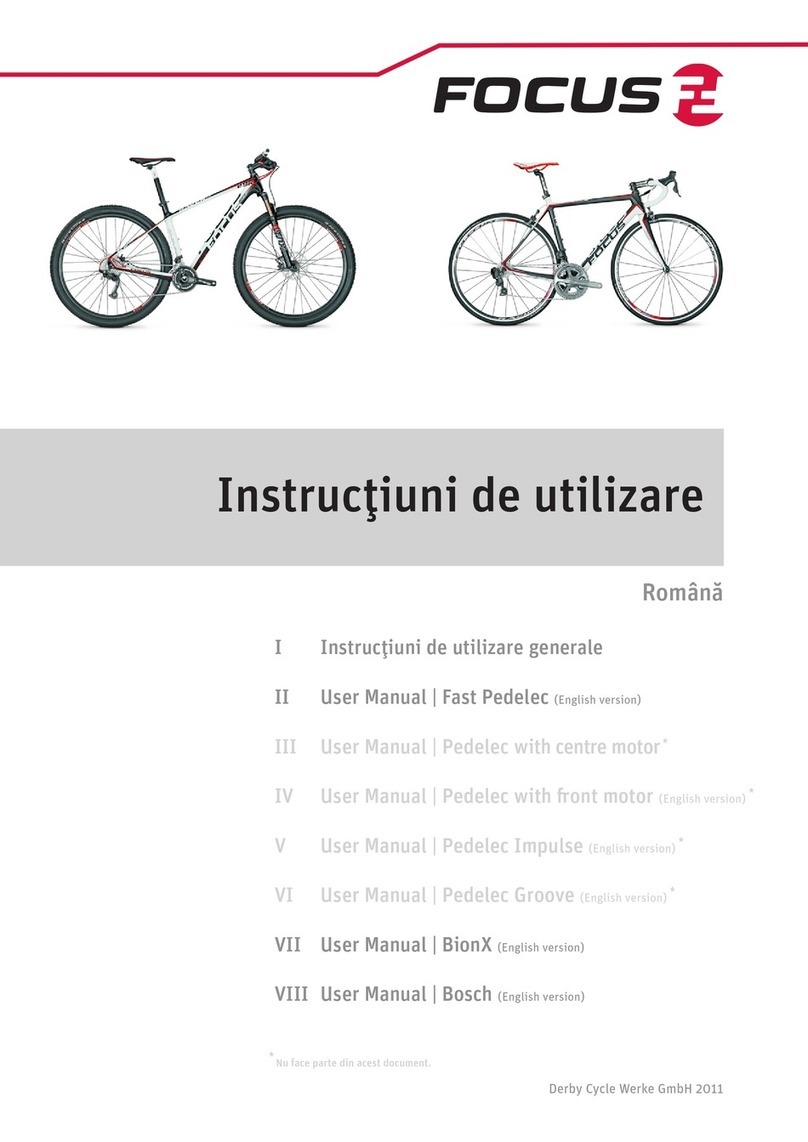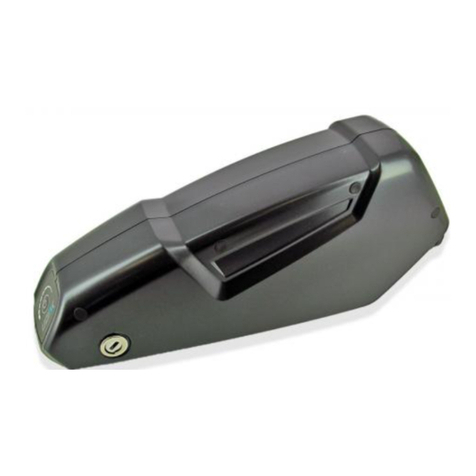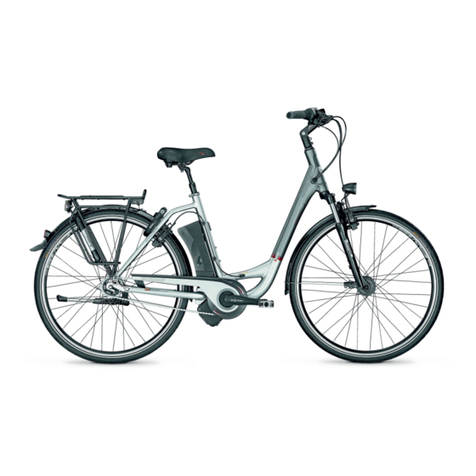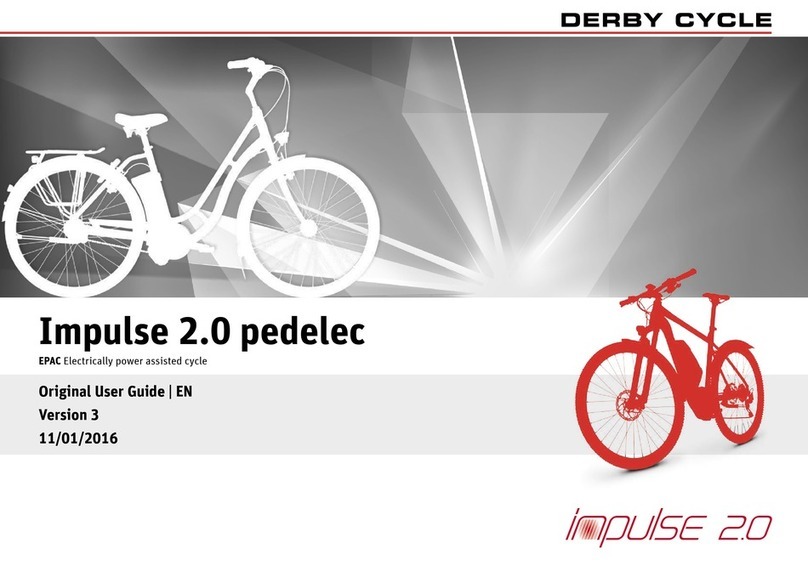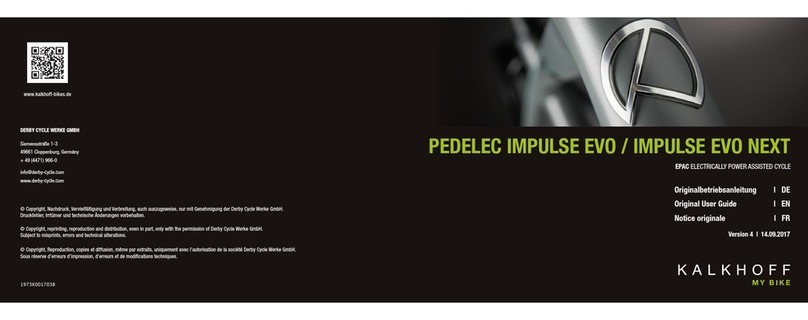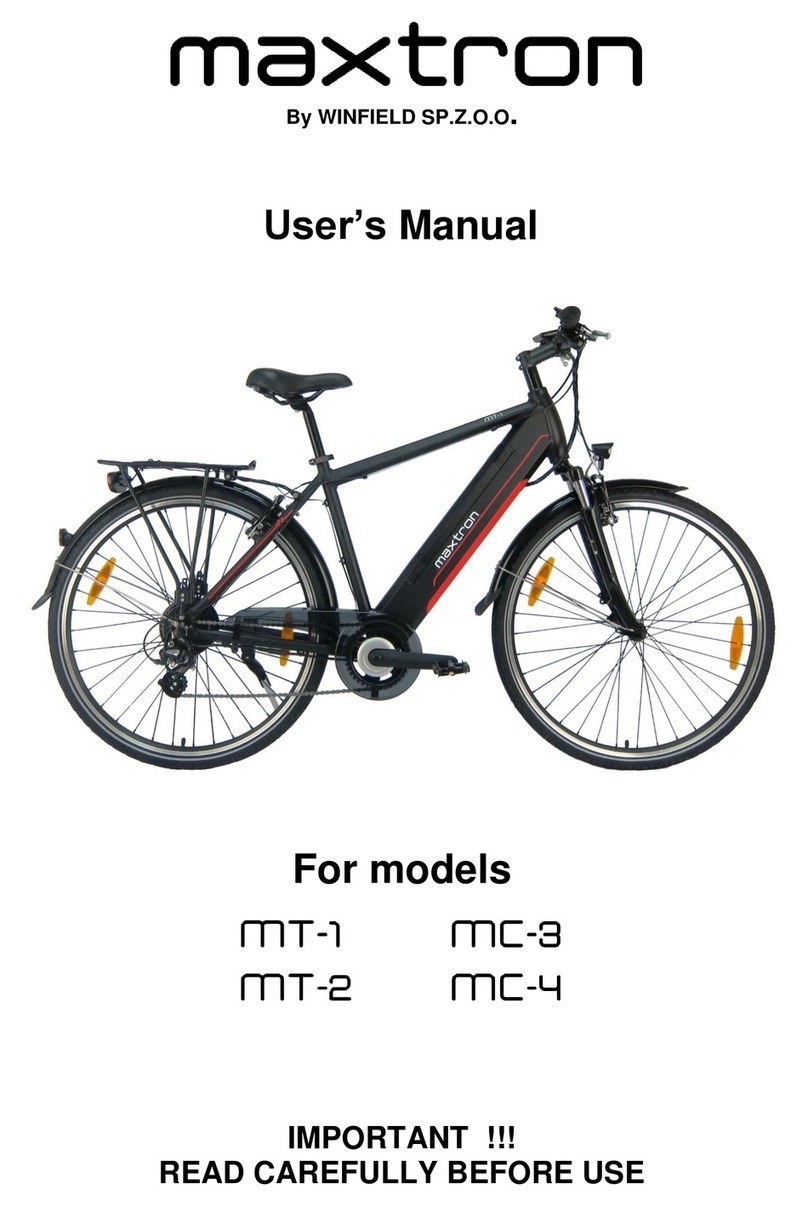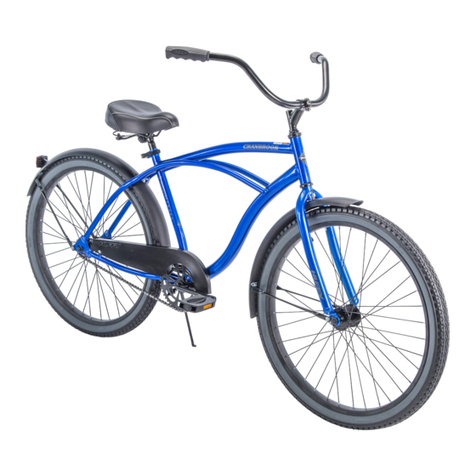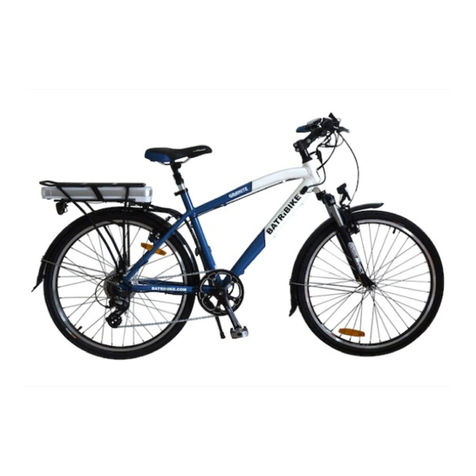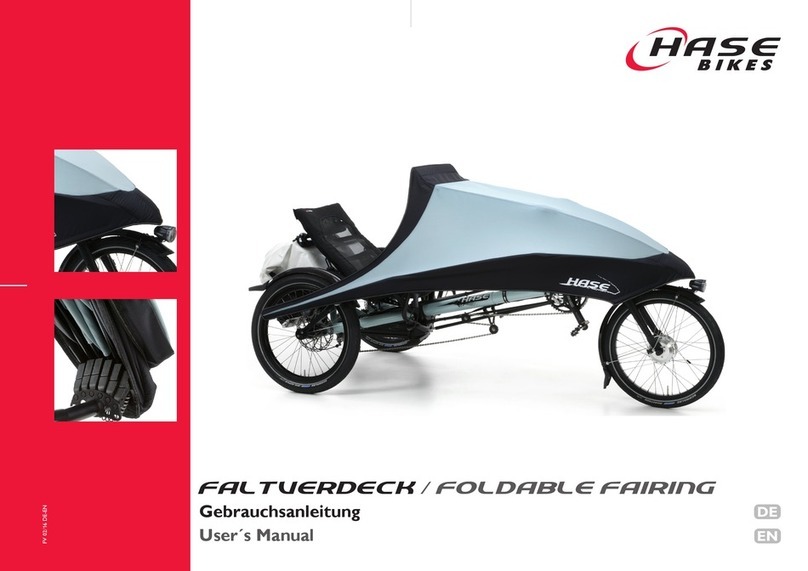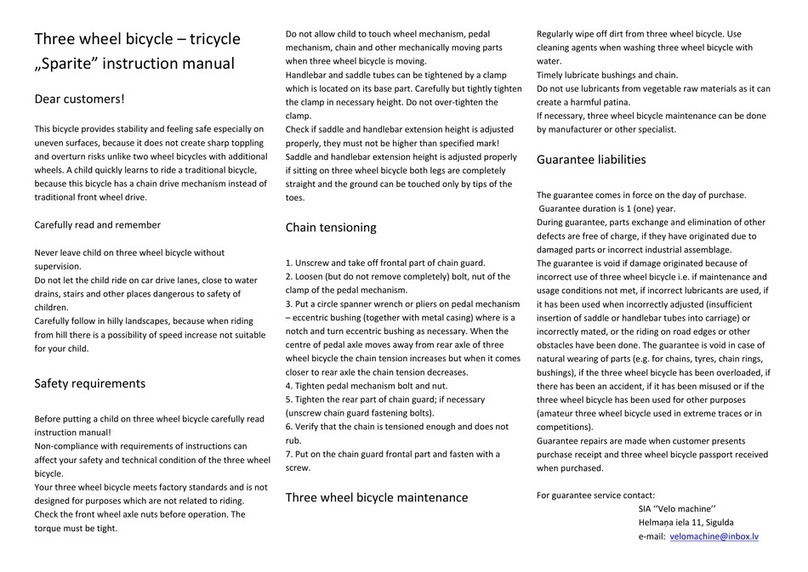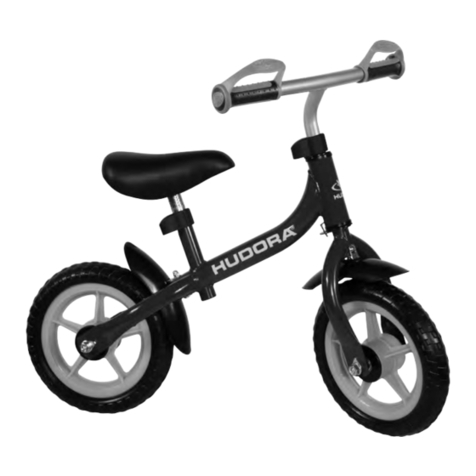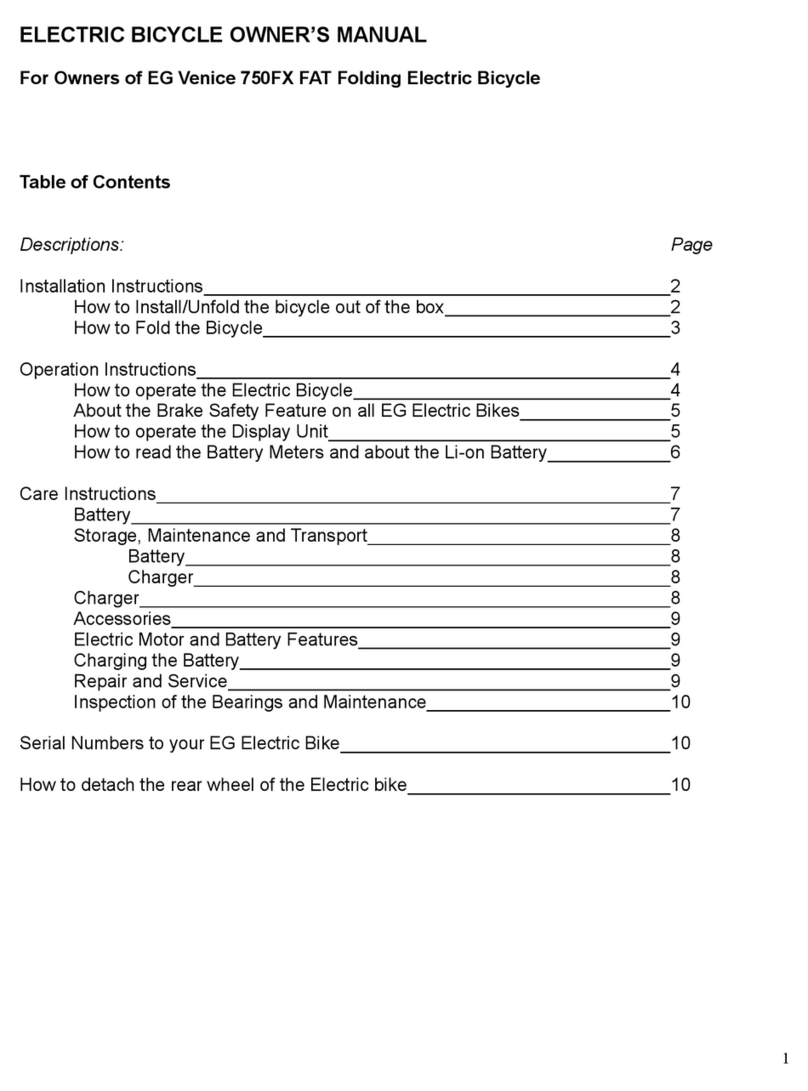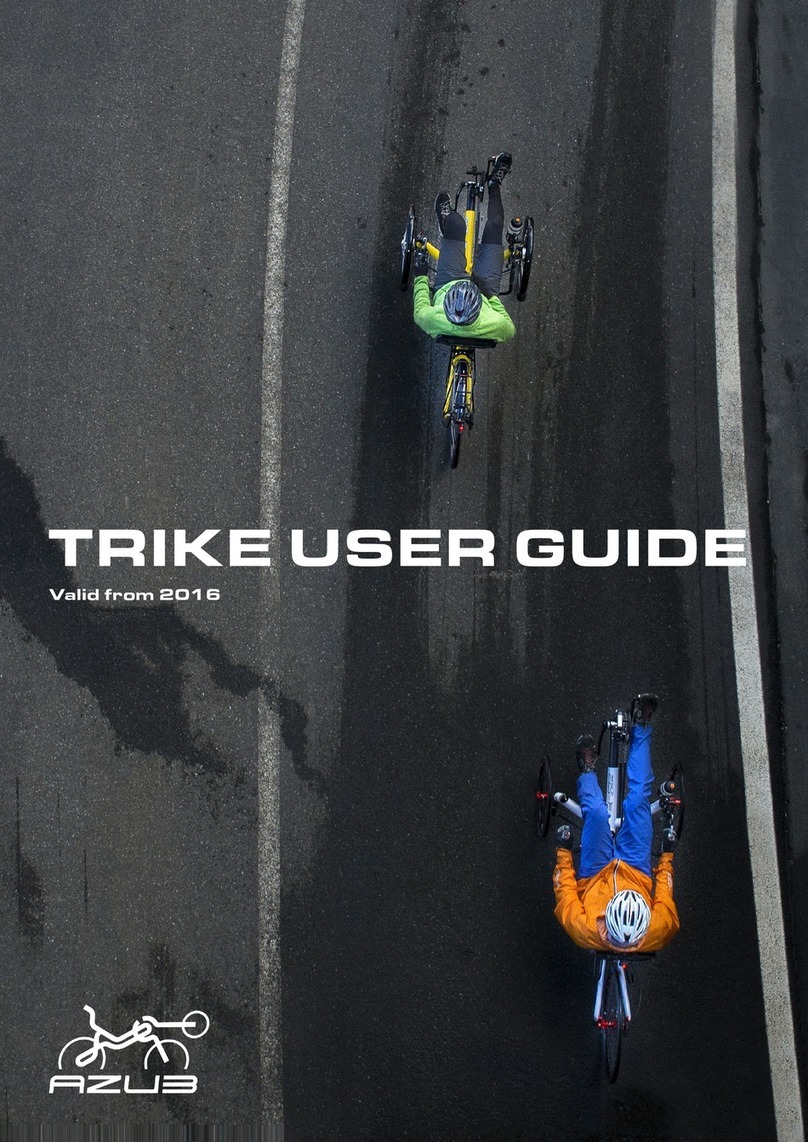
Originalbetriebsanleitung Allgemein EN-13
6.3 Carbon: general safety information
Carbon is a material which is rust-free, very light and
stable, but which does however require special care.
Typical components made from carbon bre can for
example include handlebars, front stems, seat posts and
saddle rails, cranks, frames and forks. Let your dealer
show you how to deal with this material.
Warnings
Serious falls and accidents caused by broken
components.
▪Carbon components must no longer be used if they
are cracked or broken.
▪Never expose carbon components to high
temperatures! Temperatures which are detrimental
to the safety of components can be reached even
in a vehicle left in strong sunlight. If you are not
absolutely sure about the intact condition of a
carbon component, have the aected part checked at
a specialist workshop, and replaced if necessary.
Caution
Slight injury caused by carbon splinters.
▪ Carbon bres are very thin and hard. Damaged
carbon parts should therefore be handled with great
care. Individual bres can peel o and protrude. You
run the risk of injury from small splinters, should
these come into contact with your skin.
7. Legal requirements for use on public
roads
If you use your bicycle on public roads, you must
satisfy legal requirements. Violations are classed as
misdemeanours, and are punishable by nes. The following
regulations, inter alia, were applicable at the time that
these operating instructions were prepared (06/2021):
7.1 Bicycle (motorless)/Pedelec
In Europe, Pedelecs are legally classied as bicycles
with no motor if the motor has a rated continuous output
of 250 Watt, supporting pedalling up to approximately
25 km/h before switching o support at speeds in excess
of this. Therefore, Pedelecs and their riders on public roads
are subject to the same requirements as motorless bicycles.
So, you don’t need a driving licence, or insurance for
your Pedelec. While there is no legal obligation to wear a
helmet, you should always wear a suitable helmet for your
own safety when underway.
7.1.1 Operating regulations
If you want to ride on a public road, your bicycle
(motorless) or Pedelec must at least be tted with the
following components:
▪Brake system
▪Bell
▪Lighting device
In Germany, for example, the following lighting devices
are required (StVZO §67): One white spotlight, one red rear
light, two yellow reectors on each of the pedals and two
yellow reectors per wheel (alternatively, white reecting
rings on the tyres or rims).
In addition, further requirements are covered in
national legislation governing operating regulations
7.3 Operating regulations on the Internet Page EN-14.
If components which are required by law in your country
are not tted to your bicycle, you must retrot these
before travelling on public roads.
7.1.2 Rules of conduct
If you travel on public roads with your bicycle (motorless)/
Pedelec, you must also comply with certain rules as a rider.
In addition to specic national requirements, 7.4 Rules
of conduct on the Internet Page EN-14 these normally include:
▪Due consideration for other road users.
▪ Do not ride under the inuence of alcohol or drugs.
▪Do not ride “hands free”.
▪ Stop when the trac light is red.
▪Use cycle paths.
▪Always ride on the proper side
of the road. However, if a cycle
path is only available on the
other side of the street and
this is marked with a trac
sign with a bicycle, you must
use this.
7.2 S-Pedelec
In Europe, S-Pedelecs are legally classied as Class L1e
mopeds. The operating and behavioural regulations
applicable on public roads dier from those for motorless
bicycles and Pedelecs:
7.2.1 Operating regulations
If you want to use your S-Pedelec on public roads,
you must satisfy the following, inter alia:
▪ You require an EU Certicate of Conformity
4.4 S-Pedelec: EU Certificate of Conformity Page EN-10.
▪Riders must have insurance. An illuminated (insurance)
number plate is also required.
▪You need a Class AM driving licence at least.
▪ A horn, mirror and side stand must be tted to the
S-Pedelec.
▪ The S-Pedelec must be tted with a white spotlight and
red rear light. The spotlight and rear light must always
be lit while riding. Two yellow reectors must also be
tted to each of the pedals and two yellow reectors per
wheel (alternatively, white reecting rings on the tyres
or rims). In addition, S-Pedelecs also require yellow side
reectors, which are normally tted to the fork.
Fig. 3 Special routes




















